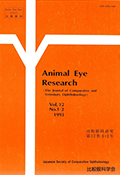Volume 12, Issue 1-2
Displaying 1-8 of 8 articles from this issue
- |<
- <
- 1
- >
- >|
Prof. Gelatt's Special Lecture Series in Japan
-
1993Volume 12Issue 1-2 Pages 1-2_1-1-2_14
Published: 1993
Released on J-STAGE: December 25, 2020
Download PDF (4917K) -
1993Volume 12Issue 1-2 Pages 1-2_15-1-2_27
Published: 1993
Released on J-STAGE: December 25, 2020
Download PDF (4776K)
The 12th Annual Meeting of the Society
Reports
-
1993Volume 12Issue 1-2 Pages 1-2_29-1-2_36
Published: 1993
Released on J-STAGE: December 25, 2020
Download PDF (2628K) -
1993Volume 12Issue 1-2 Pages 1-2_37-1-2_44
Published: 1993
Released on J-STAGE: December 25, 2020
Download PDF (2091K)
Poster Session
-
1993Volume 12Issue 1-2 Pages 1-2_45-1-2_47
Published: 1993
Released on J-STAGE: December 25, 2020
Download PDF (784K) -
1993Volume 12Issue 1-2 Pages 1-2_49-1-2_51
Published: 1993
Released on J-STAGE: December 25, 2020
Download PDF (892K)
Information & Data
-
1993Volume 12Issue 1-2 Pages 1-2_53-1-2_69
Published: 1993
Released on J-STAGE: December 25, 2020
Download PDF (4711K) -
1993Volume 12Issue 1-2 Pages 1-2_71-1-2_75
Published: 1993
Released on J-STAGE: December 25, 2020
Download PDF (1625K)
- |<
- <
- 1
- >
- >|
